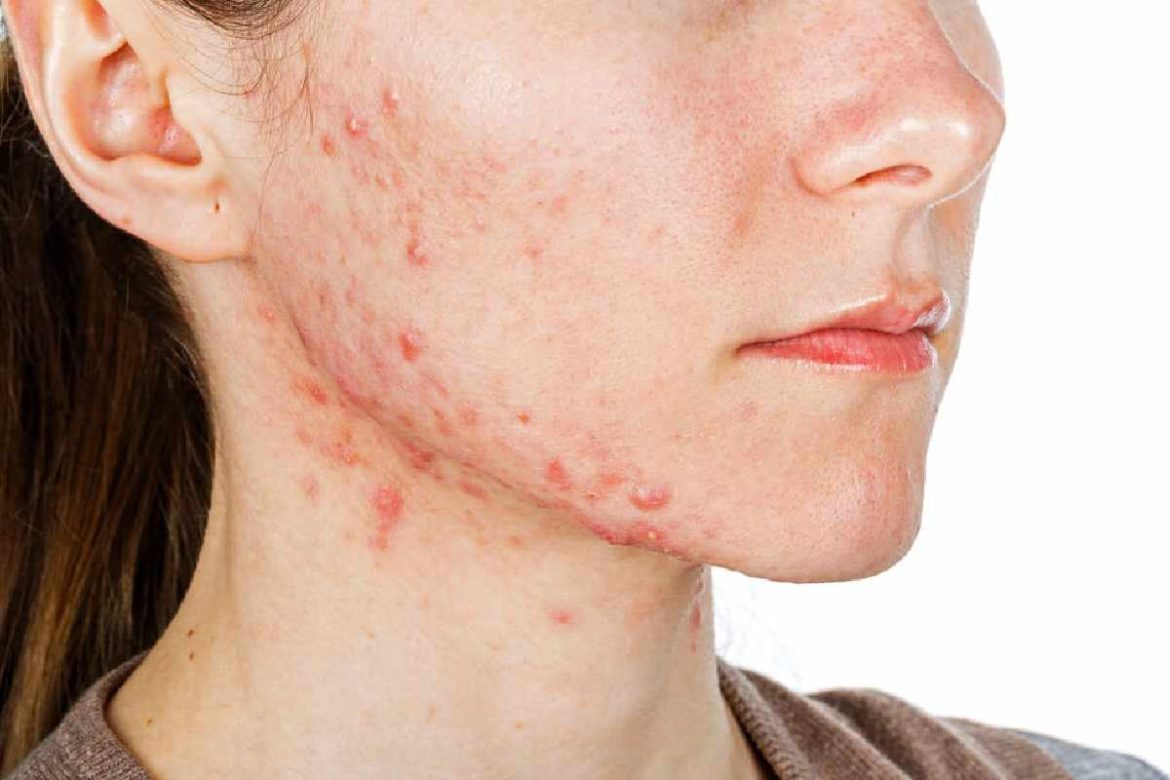8 Skin conditions you should be aware of – We all come into contact with skin conditions at some point in our lives, whether it’s a minor issue that clears up quickly or something more long-term. Unfortunately, there are also many severe skin conditions out there that can have serious consequences if left untreated. It’s essential to be aware of these potential threats, as early detection and treatment are crucial to making sure any potentially painful or uncomfortable symptoms don’t become a significant problem down the line.
This article will examine eight common skin conditions you should be aware of and how they present themselves so you know what to look for.
Acne
It’s one of the most common skin conditions; almost everyone will experience it at least once. It is caused by overactive sebaceous glands, which produce an excess amount of oil, causing clogged pores, and blemishes filled with pus. Acne can be treated with antibiotics, topical creams, and special cleansers. Those with a genetic predisposition for acne should visit the dermatologist regularly for preventive treatments that can help improve symptoms.
Additional treatments, such as laser therapy or surgery, may be recommended in severe cases. Understanding what causes acne and taking appropriate precautions can help manage it successfully and prevent further complications.
Eczema
Eczema is a skin condition that causes inflamed and irritated patches of skin. It is often linked to allergies or asthma and can be made worse by certain fabrics, soaps, detergents, heat, cold, and stress. Symptoms include redness, dryness, cracking, and itching. Treatment includes moisturizing lotions, creams, and anti-inflammatory medications, but light therapy or immunosuppressant drugs may be needed in severe cases.
Eczema is more common in those with a family history of allergies or asthma, so it’s essential to watch for signs and symptoms in children. Early identification and treatment can prevent the condition from worsening and help ensure it is under control.
Psoriasis
It is a chronic skin condition characterized by thick, red patches of skin with scales. The root of this condition remains a mystery, yet researchers suspect it is linked to an overactive immune system. The symptoms can range from mild and localized discomfort to extreme and widespread pain. Symptoms range from mild and localized to severe and widespread. Treatment includes topical creams, ointments, light therapy, or systemic medications.
This skin condition can be debilitating and cause significant discomfort, so it’s essential to seek treatment as soon as possible. Early detection can help control the symptoms, reduce flare-ups, and improve quality of life.
Ringworm and tinea versicolor
Ringworm and tinea versicolor are two very different skin conditions that can often be mistaken for one another. Ringworm is caused by a fungus, while tinea versicolor is caused by yeast. Both are contagious and can spread through contact with infected people or objects, but ringworm tends to be more severe.
The symptoms of ringworm include an itchy ring-shaped rash with raised edges, while tinea versicolor causes small patches of discolored skin. Treatment for ringworm includes antifungal creams, lotions, and shampoos, while tinea versicolor should be treated with topical antifungal medications and light therapy. Ringworm vs. eczema is often challenging to differentiate, and a doctor should be consulted as soon as possible.
Rosacea
It is a chronic, inflammatory skin condition that causes redness and pimples on the face. It is most commonly seen in people with fair skin, usually between 30 and 50. The exact cause is unknown, but specific triggers, such as sun exposure, alcohol consumption, and spicy foods, can worsen symptoms. Treatment consists of topical medications, laser treatments, and oral antibiotics.
It is crucial to identify rosacea early on to prevent further complications such as eye infections or skin thickening. In some cases, lifestyle modifications may be needed to reduce the frequency and intensity of flare-ups.
Cold sores
Highly contagious and itchy, cold sores are caused by the herpes simplex virus and emerge as a cluster of watery blisters near or on the lips. It is contagious and can be spread through contact with an infected person or object, so it’s essential to take precautions when in close contact with someone with cold sores.
Symptoms include itching, burning, and tingling before the blister appears. Treatment includes antiviral medications and topical creams to reduce discomfort and speed healing. Avoiding triggers such as stress or sun exposure can also prevent cold sores.
Moles and melanoma
These growths on the skin are usually benign but can sometimes develop into melanoma, a type of skin cancer. It is crucial to check moles regularly for any changes in size, shape, or color that could indicate a more severe condition.
If a mole looks suspicious, it should be examined by a doctor as soon as possible. Treatment for melanoma includes surgery to remove the cancerous cells or chemotherapy and radiation therapy if it has spread to other body parts. Early detection is critical when it comes to treating any skin cancer.
Allergies
Allergies result from an over-excited immune system that reacts to foreign particles, causing itchy and red skin rashes. Common allergens include pollen, dust mites, animal dander, and certain food items. Treatment depends on the cause but often involves avoiding triggers and taking medications such as antihistamines or corticosteroids.
Some allergy shots may be needed to build up a tolerance to the allergens. While allergies can’t always be prevented, avoiding known triggers and taking steps to reduce exposure are essential in managing the condition.


